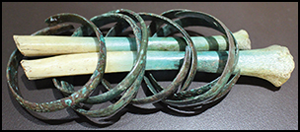Article contents
Make a desert and call it peace: massacre at the Iberian Iron Age village of La Hoya
Published online by Cambridge University Press: 01 October 2020
Abstract

Once considered rare, archaeological examples of violence in prehistoric Europe have accumulated over recent decades, with new discoveries providing evidence of large-scale, organised warfare among pre- and protohistoric populations. One example is La Hoya in north-central Iberia. Between the mid fourth and late third centuries BC, the site was subjected to a violent attack, its inhabitants killed and the settlement burned. Here the authors present osteological analyses for a massacre: decapitations, amputations and other sharp-force injuries affecting a wide cross section of the community. They interpret the massacre as an instance of conflict between rival local communities, contributing to a growing picture of the scale and nature of violence in Iron Age Europe.
- Type
- Research Article
- Information
- Copyright
- Copyright © Antiquity Publications Ltd, 2020
References
- 7
- Cited by




